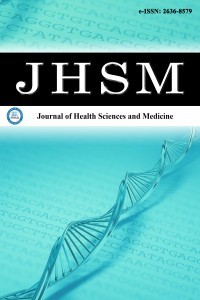1.
Rothamel D, Wahl G, d’Hoedt B, Nentwig G-H, Schwarz F, Becker J. Incidence and predictive factors for perforation of the maxillary antrum in operations to remove upper wisdom teeth: prospective multicentre study. <em>Br J oral Maxillofac Surg.</em> 2007; 45(5):387-391.
2.
Lim AAT, Wong CW, Allen Jr JC. Maxillary third molar: patterns of impaction and their relation to oroantral perforation. <em>J oral Maxillofac Surg.</em> 2012;70(5):1035-1039.
3.
Iwata E, Hasegawa T, Kobayashi M, et al. Can CT predict the development of oroantral fistula in patients undergoing maxillary third molar removal? <em>Oral Maxillofac Surg.</em> 2021;25(1): 7-17. doi:10.1007/s10006-020-00878-z
4.
Archer WH. Oral and maxillofacial surgery. <em>WB Saunders.</em> 1975;1045-1087.
5.
Hasegawa T, Tachibana A, Takeda D, et al. Risk factors associated with oroantral perforation during surgical removal of maxillary third molar teeth. <em>Oral Maxillofac Surg</em>. 2016;20(4):369-375. doi:10.1007/s10006-016-0574-1
6.
Pei J, Liu J, Chen Y, Liu Y, Liao X, Pan J. Relationship between maxillary posterior molar roots and the maxillary sinus floor: cone-beam computed tomography analysis of a western Chinese population.<em> J Int Med Res.</em> 2020;48(6):0300060520926896.
7.
Racic A, Dotlic J, Janoševic L. Oral surgery as risk factor of odontogenic maxillary sinusitis. <em>Srp Arh Celok Lek.</em> 2006;134(5-6):191-194.
8.
Wu X, Cai Q, Huang D, Xiong P, Shi L. Cone-beam computed tomography-based analysis of maxillary sinus pneumatization extended into the alveolar process in different age groups. <em>BMC Oral Health.</em> 2022;22(1):393.
9.
Bornstein MM, Ho JKC, Yeung AWK, Tanaka R, Li JQ, Jacobs R. A retrospective evaluation of factors influencing the volume of healthy maxillary sinuses based on CBCT imaging. <em>Int J Periodontics Restorative Dent.</em> 2019;39(2)187-193.
10.
Luz J, Greutmann D, Wiedemeier D, Rostetter C, Rücker M, Stadlinger B. 3D-evaluation of the maxillary sinus in cone-beam computed tomography. <em>Int J Implant Dent.</em> 2018;4(1):1-7.
11.
Cavalcanti MC, Guirado TE, Sapata VM, et al. Maxillary sinus floor pneumatization and alveolar ridge resorption after tooth loss: a cross-sectional study. <em>Braz Oral Res.</em> 2018;32:e64.
12.
Takahashi Y, Watanabe T, Iimura A, Takahashi O. A study of the maxillary sinus volume in elderly persons using Japanese cadavers. <em>Okajimas Folia Anat Jpn.</em> 2016;93(1):21-27.
13.
Kottoor J, Velmurugan N, Surendran S. Endodontic management of a maxillary first molar with eight root canal systems evaluated using cone-beam computed tomography scanning: a case report. <em>J Endod.</em> 2011;37(5):715-719.
14.
Sharan A, Madjar D. Correlation between maxillary sinus floor topography and related root position of posterior teeth using panoramic and cross-sectional computed tomography imaging. <em>Oral Surg Oral Med Oral Pathol Oral Radiol Endod</em>. 2006;102(3): 375-381. doi:10.1016/j.tripleo.2005.09.031
15.
Purmal K, Alam MK, Pohchi A, et al. 3D measurement of maxillary sinus height for multidisciplinary benefit. <em>J Hard Tissue Biol.</em> 2015;24(2):225-228.
16.
Kilic C, Kamburoglu K, Yuksel SP, Ozen T. An assessment of the relationship between the maxillary sinus floor and the maxillary posterior teeth root tips using dental cone-beam computerized tomography. <em>Eur J Dent.</em> 2010;4(04):462-467.
17.
Gu Y, Sun C, Wu D, Zhu Q, Leng D, Zhou Y. Evaluation of the relationship between maxillary posterior teeth and the maxillary sinus floor using cone-beam computed tomography. <em>BMC Oral Health.</em> 2018;18(1):1-7.
18.
Themkumkwun S, Kitisubkanchana J, Waikakul A, Boonsiriseth K. Maxillary molar root protrusion into the maxillary sinus: a comparison of cone beam computed tomography and panoramic findings. <em>Int J Oral Maxillofac Surg.</em> 2019;48(12):1570-1576.
19.
Zhang YQ, Yan XB, Meng Y, Zhao YN, Liu DG. Morphologic analysis of maxillary sinus floor and its correlation to molar roots using cone beam computed tomography. <em>Chin J Dent Res.</em> 2019;22(1):29-36.
20.
Jung Y-H, Cho B-H. Assessment of the relationship between the maxillary molars and adjacent structures using cone beam computed tomography. <em>Imaging Sci Dent.</em> 2012;42(4):219-224.
21.
Douglass CW, Valachovic RW, Wijesinha A, Chauncey HH, Kapur KK, McNeil BJ. Clinical efficacy of dental radiography in the detection of dental caries and periodontal diseases. <em>Oral Surg Oral Med Oral Pathol.</em> 1986;62(3):330-339.
22.
Marmulla R, Wortche R, Muhling J, Hassfeld S. Geometric accuracy of the NewTom 9000 cone beam CT. <em>Dentomaxillofacial Radiol.</em> 2005;34(1):28-31.

